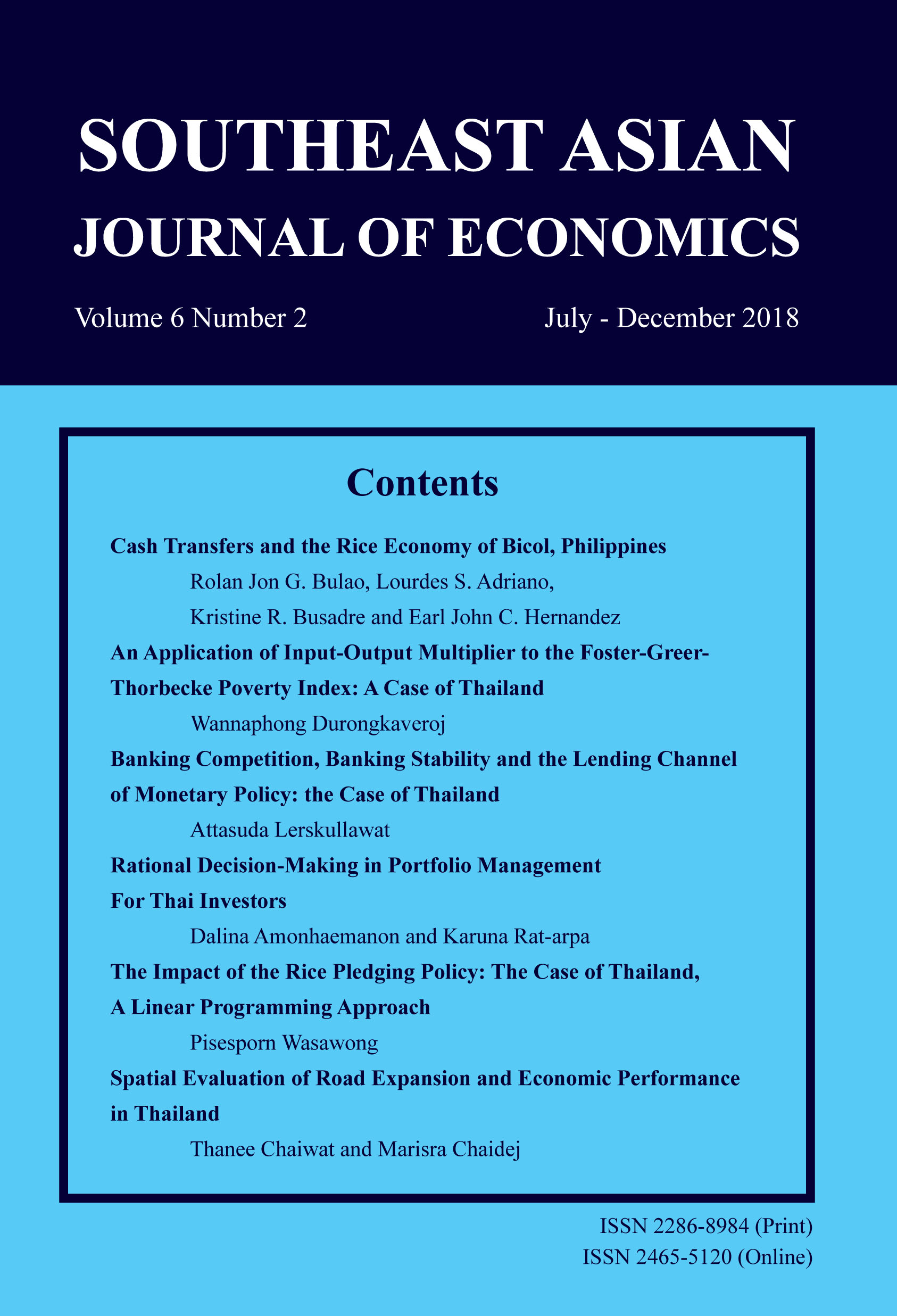Empirical Exchange Rate Models of Thailand after 1997
Keywords:
Exchange Rate Models, Forecasting, Thai BahtAbstract
This paper mainly aims to assess the exchange rate prediction of Thailand after the financial crisis in 1997. Using Thai and other relevant country data from 1999 to 2013 quarterly, the paper performs six country pair empirical tests, including the US, UK, EU, China, Japan and Korea currencies against the Thai baht. Following Messe and Rogoff (1983a), it compares the several models of exchange rates on the basis of their out-of-sample forecasting accuracy. The RMSE statistics are calculated and used to measure the out-of-sample accuracy. The three structural models are the Dornbusch-Frankel sticky price monetary model, the Frenkel-Bilson flexible price model and the Hooper-Morton sticky price with current account model. The two univariate time series techniques include the long AR model and the Akaike Information Criterion. The alternative models presented in this paper are the random walk and the forward rate models. The paper finds that the random walk model dominates the other models for out-of-sample forecasting of the Thai baht.
Downloads
How to Cite
Issue
Section
License
The submission of a manuscript implies that the paper is an original work and has not been published elsewhere. The author(s) authorize the journal to reproduce or distribute the paper in printed or other electronic forms.







